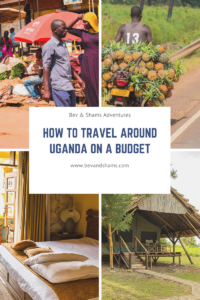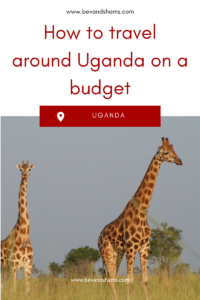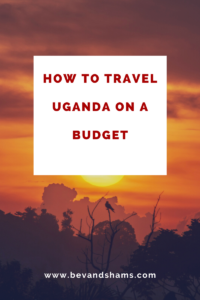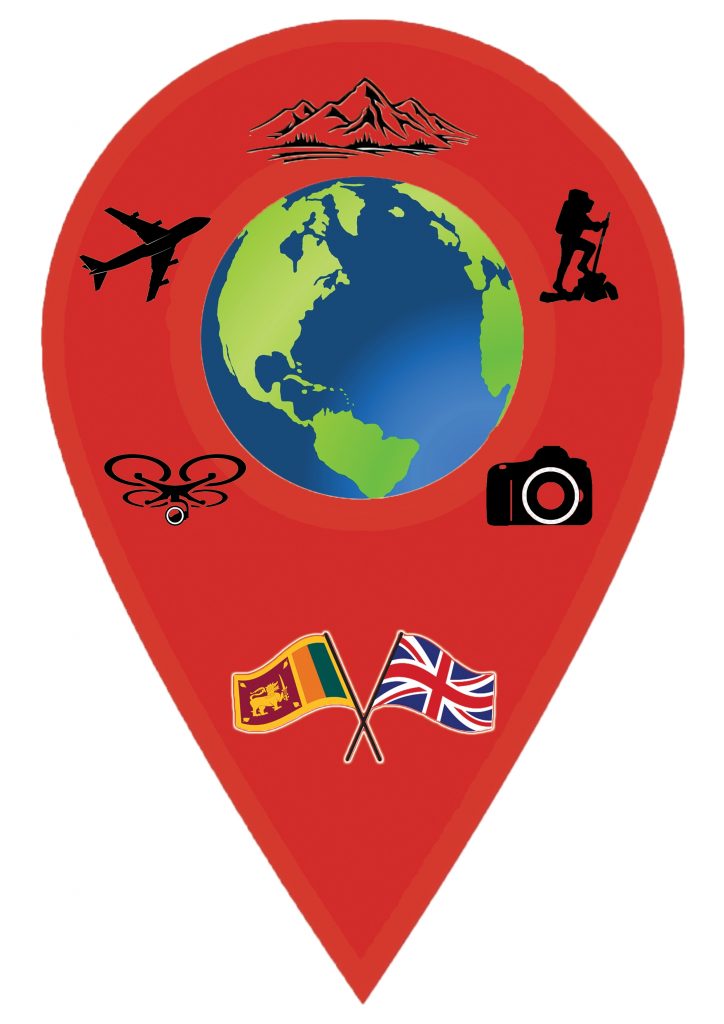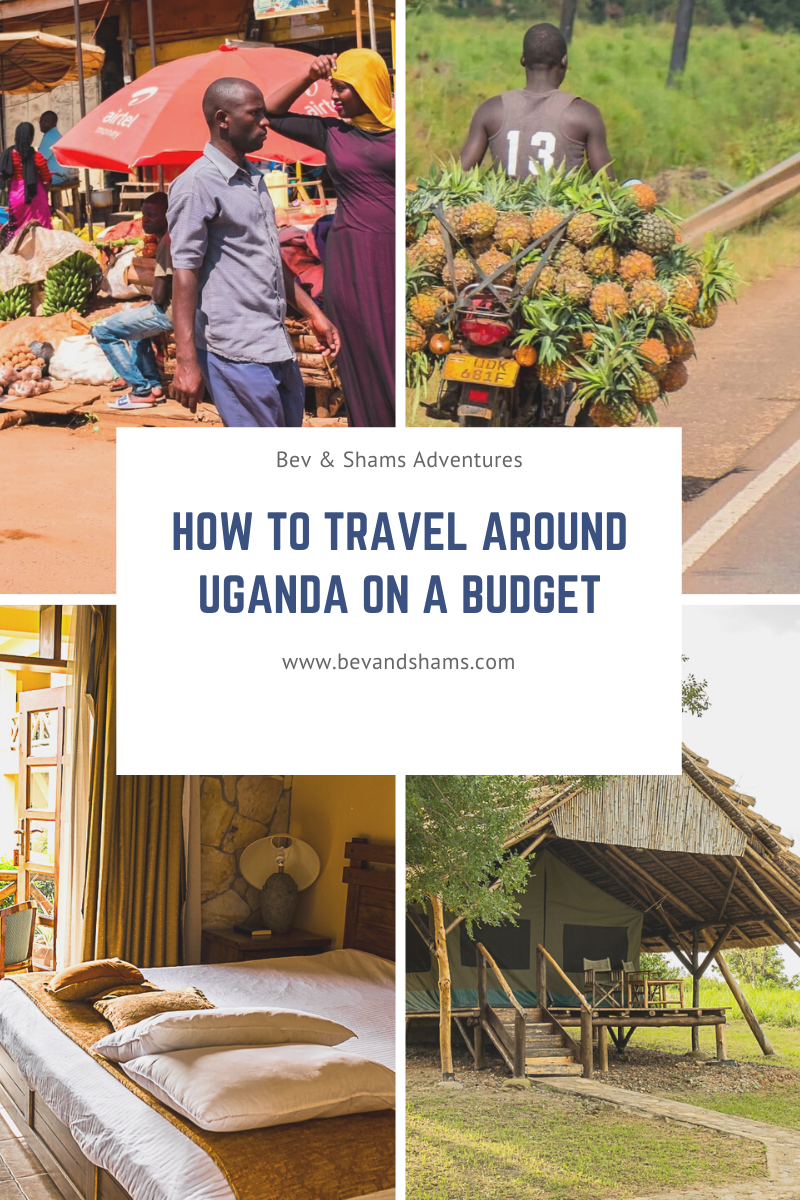How to Travel around Uganda on a Budget
For most people travelling to Uganda is a once-in-a-lifetime trip that they tick off their bucket list, but it doesn’t always come cheap unless you know the following tips.
Regardless, whether you are travelling solo, with a group or even with your family, these tips will help you save money while travelling around Uganda on a budget.
There are so many amazing things to do and see in Uganda, from the top-rated gorilla trek through Bwindi Impenetrable Forest, to the Rwenzori Mountains and meeting the coffee growers to the awe-inspiring safari experiences throughout Uganda’s ten national parks.
I immigrated to Canada from Uganda at the age of three and visited for the first time in 2007.
There has been a significant change from then to the present times. However, the one thing that has not changed is the bountiful nature and the beautiful people you will meet while travelling across Uganda.
Uganda has captured my heart since I first visited, and every time is like the first time for me as I fall in love with the country all over again, so let me show you how to travel to Uganda on a budget.
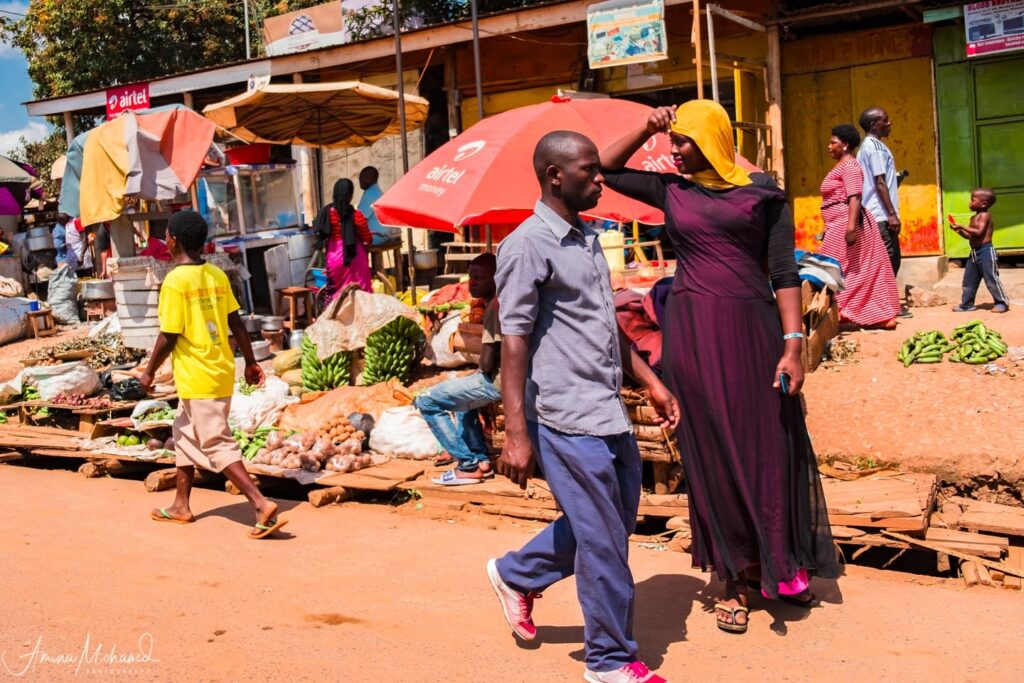
There may be affiliate links within this article, using these links will not cost you anything extra, but we may earn a small commission. Thank you for your support.
Table of Contents
TIP # 1 – START AT HOME WITH YOUR VACCINES
Before you leave for your trip to Uganda, you need to get your vaccines. Currently, you require the Yellow Fever vaccine certificate to enter.
The good news is that you only need the Yellow Fever vaccine once, and you are set for life. Did you lose your certificate? Contact the travel clinic where you first got it done, and they should hopefully have a copy.
Unfortunately, if you did lose it, you will have to get the vaccine again.
Other vaccines you will require are Hepatitis B, Typhoid, Cholera and Malaria tablets.
Furthermore, with the outbreak of the pandemic, Uganda may require proof of the Covid Vaccine before entering, so make sure you keep your immunization record when you get your vaccine.
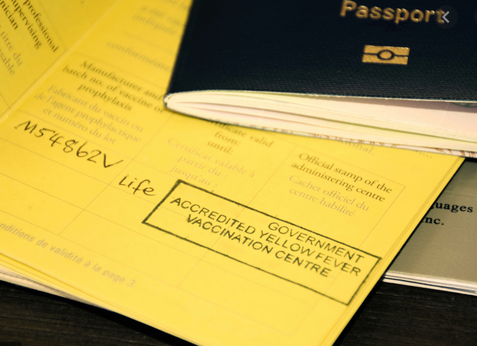
Here’s where you save and budget for these expensive treatments. Bypass the travel clinics and see your doctor.
My doctor prescribes everything I need and then puts me on a schedule months before I am leaving. I still pay for the vaccines, but I don’t have to pay for the advice from the travel clinic that I can read on the internet.
I save approximately $300 CAD simultaneously, which I can then put towards my excursions in Uganda.
Many travellers are unaware that their doctors and pharmacists can do the same thing that the travel clinic proffers.
Read more tips on how to have a safe trip to Uganda post-COVID
TIP #2 – SAVE ON YOUR FLIGHTS
Flights can be one of the most expensive items on your list of things to pay for. Most experienced travellers know that you should never fly on a Friday or Sunday if you want to save money.
Here’s the general rule of thumb if you are on a budget, and even if you are not on a budget, the following travel days will also be the less busy days, so you can get better seats, which is vital on a long flight.
- The cheapest days to travel are Tuesday, Wednesday and Saturday as airlines are looking to fill up the plane, and these are the days that avid travellers tend not to pick.
- The expensive days to travel are Fridays and Sundays. These days are the most popular and thus will cost more, especially when flying from North America or Europe.
- Also consider flying during the following times when most people don’t want to, such as dawn, overnight or during the lunch or dinner hour.
- Finally, especially as it relates to Uganda, fly during the rainy season, not the dry season. The difference can be hundreds of dollars.
As it relates to the last point, I don’t do this when travelling to Uganda. I want to see the gorillas and the animals and experience Uganda when it is dry.
When the rainy season comes, it can turn into floods from the road conditions and make viewing the wildlife on safari or trekking the gorillas and chimps very difficult. That, to me, is not the best way to experience Uganda.
However, if you don’t mind those conditions, this is one way to put over $300 – $500 dollars back into your pocket as the difference in price between flying during the dry season vs the rainy season is significant.
Conversely, going to Uganda towards the end of the rainy season and the start of the dry season can still be a bit cheaper than going mid-season, so keep that in mind.
Finally, some will argue that it is also cheaper to do two or more stops or layaways on your way to Uganda vs. a direct flight or a flight with only one stop.
I have tried both.
For me, it does not make sense, as I am not only exhausted when I get to Uganda, but the layovers can be long and arduous. I end up spending hundreds of dollars shopping for stuff I don’t want or need in the Duty-Free or eating food that’s not healthy for me while waiting for my next leg of the trip.
TIP #3 – SAVE ON TRANSPORTATION WHEN TRAVELLING AROUND UGANDA
Uganda offers you various ways to get around. With Triple F Photo Tours, you don’t have to worry as we transport you everywhere from the minute you land at the airport in Entebbe and throughout the tour of Uganda.
However, if you are travelling solo and without a tour operator, here are some options for you to consider, to stay on budget while travelling and experiencing all that Uganda has to see and do.
Boda Bodas
Are motorcycle taxis commonly seen across East Africa. They are usually seen only in the bigger cities, such as Entebbe, Kampala and Jinja, but sometimes you will find them near the national parks as that’s how the locals can afford to travel.
While cost-effective, especially if you are on a budget, I would suggest if you want to live to make it back home to avoid this type of transportation. I remember taking a boda-boda on my trip home in 2012, and the driver was a sheer maniac.
The more I told him to slow down; he took it as a sign to speed up.
Recently, Uber has arrived in Uganda, and the Boda Boda is just one of their offerings. The drivers wear safety vests and helmets, and you, as the passenger, are also required to wear one.
The cost difference is minimal. Unlicensed, you pay between 7,000 – 8,000 Ugandan shillings or about $2 USD per mile and licensed is ironically cheaper at 5,000 Ugandan shillings or $1.35 USD per mile.
Either way, exercise caution as it’s not always about the budget when your safety is at risk.
You will see Boda Bodas carrying families, trees, TVs with passengers, and more. It’s a great way to get terrific photos as you won’t see that back home.
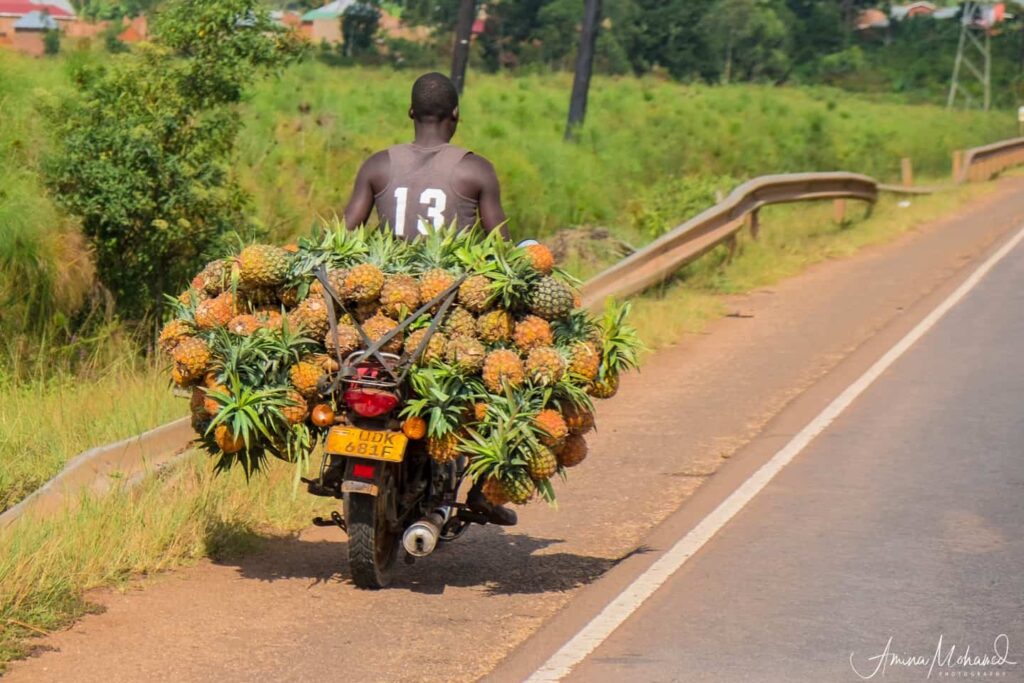
Matatus
Otherwise known as local minibuses, is inexpensive but again exercises caution. Many of these drivers are just as reckless as the Boda Boda drivers. They will do their best to cram in as many people (sometimes up to 14 people) and all their belongings to maximize their earnings.
They don’t run on a set schedule, but you will see them everywhere, especially near Nakasero Market, which is the largest market in Kampala and is the central parking place for all Matatus.
While driving through Uganda, we saw many of them broken down on the side of the road or waiting until passengers came along.
Many locals will use Matatus over Boda Bodas, especially when carrying their possessions from one place to another or travelling as a family.
Prices are cheaper at usually 1,000 – 2,000 Ugandan Shillings or $0.25 – $.050 per mile; however, the cramped quarters and broken-down vehicles can quickly become a deterrent, especially when you need to get somewhere quick.
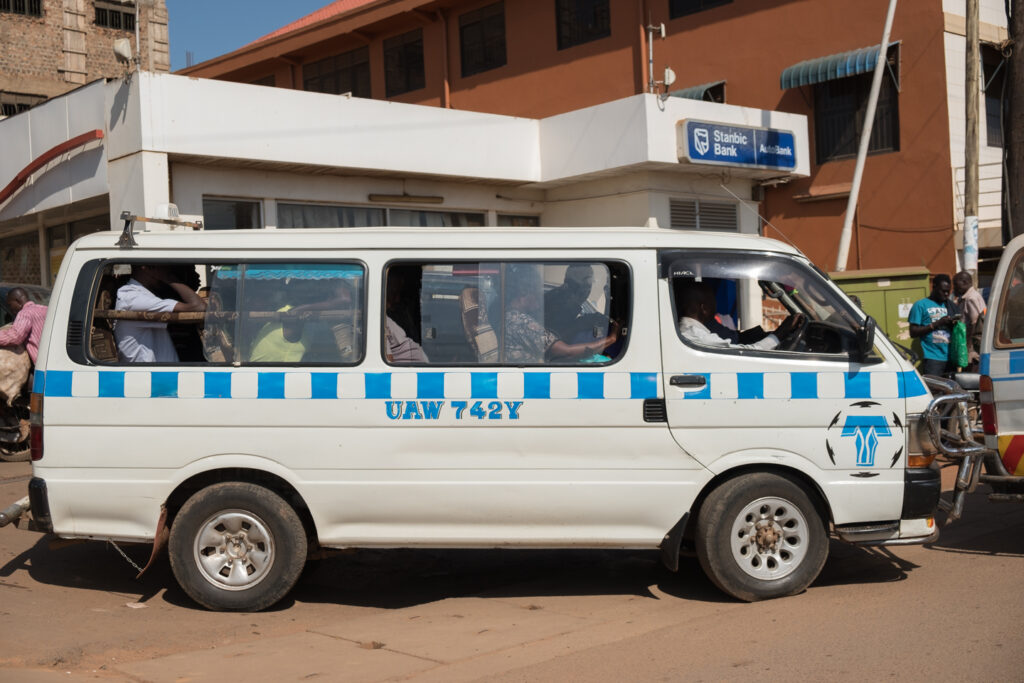
Taxis
Commonly found in many of Uganda’s cities, is considered the safest way to get around.
As a tourist, you will find it affordable and comfortable and prices range between 10,000 – 40,000 UGX or ($3 – $12 USD) for the entire ride, depending on the distance you are travelling and the time of day.
It’s cheaper to travel at night or early in the morning before the traffic starts as that’s when there is the most demand.
You can also hire a private taxi to take you on safari or any other excursion around Uganda.
First, you will arrive safely, and second, you will be able to pre-arrange your travel and know what it will cost before hiring a taxi. Unlike North America, you are not charged by the mile, nor for the car and driver. The driver will tell you the total cost before you depart, and you pay upon arrival.
Coach Buses
Are a ubiquitous sight on our tour of Uganda. No matter where we travel, you will see them going from one East African country to another, such as Tanzania, Kenya, and the Congo, into Uganda and vice versa.
Funny fact, many of them will have giant banners on the back of the bus, preaching religion, while sometimes driving in the middle of two lanes or playing chicken with other buses and trucks.
I know I had my heart in my throat driving behind them as I watched the interplay in the traffic. I guess it’s a sign to the passengers to pray for safe arrival while the driver has some fun on the road.
Buses can be a great way to travel if you plan to get to the national parks that call Uganda home, or you want to visit Jinja and the Nile but don’t necessarily have the funds to hire a private car.
The cost does depend on the route, but it’s reliable, and the fees usually will run you between 10,000 – 15,000 UGX or $13 – $16 USD for a return trip.

Private Cars
If you have the time and the budget, I suggest you hire a private car with a driver. You can drive a car yourself if you are brave enough or hire a car with a driver.
If you are not used to driving in Uganda and navigating the routes, I suggest you spend the extra money to hire a driver.
Not only will you reach your destination in one piece, but you will get a lesson on the history of the country and learn about the local culture as the drivers love to impart that to the visitors to Uganda.
This mode of transportation is the most expensive way to see Uganda, and a car with a driver will usually cost you between $80 – $100 USD/day, but you will enjoy the trip.
Contact Venex Watebawa at Rwenzori Safaris as his drivers are the safest and most knowledgeable about the country, the wildlife and will also introduce you to hidden spots only the locals know. Tell him I sent you and he will give you a discounted rate, reserved for Triple F Photo Tours.
TIP #4 – SAVE ON YOUR ACCOMMODATIONS IN UGANDA
There are four different types of accommodations you can enjoy in Uganda, including hostels, guesthouses, hotels and lodges.
Aside from the costly lodges, which most people want to do on a bucket-list trip to Uganda, I would suggest that you consider the following options if you are on a budget.
Need somewhere to stay when travelling through Uganda? Then check out my suggestions for all types of budgets Best Hotels and Lodges to Stay in Uganda.
Hostels
Unfortunately, you will be hard-pressed outside of Kampala to find many good ones, so I would suggest the following if staying in Kampala.
The Fat Cat Backpackers located in central Kampala is 15 minutes from the local attractions by taxi and 53 minutes from the airport in Entebbe.
They offer comfortable rooms with free Wifi and breakfast for $33 USD/night pp.
Bushpig Backpackers Hostel is also located in central Kampala and offers a bar, open café and is a local meeting place for many backpackers willing to share lodging.
Rates start at $27 USD/night pp, but there is no free meal.
Another way to save is where you eat. If you choose the local foods prepared in locally owned restaurants, you will eat like royalty. However, if you decide to stay on a more internationally based diet, you will pay much more. Ask the hostel or guesthouse for options.
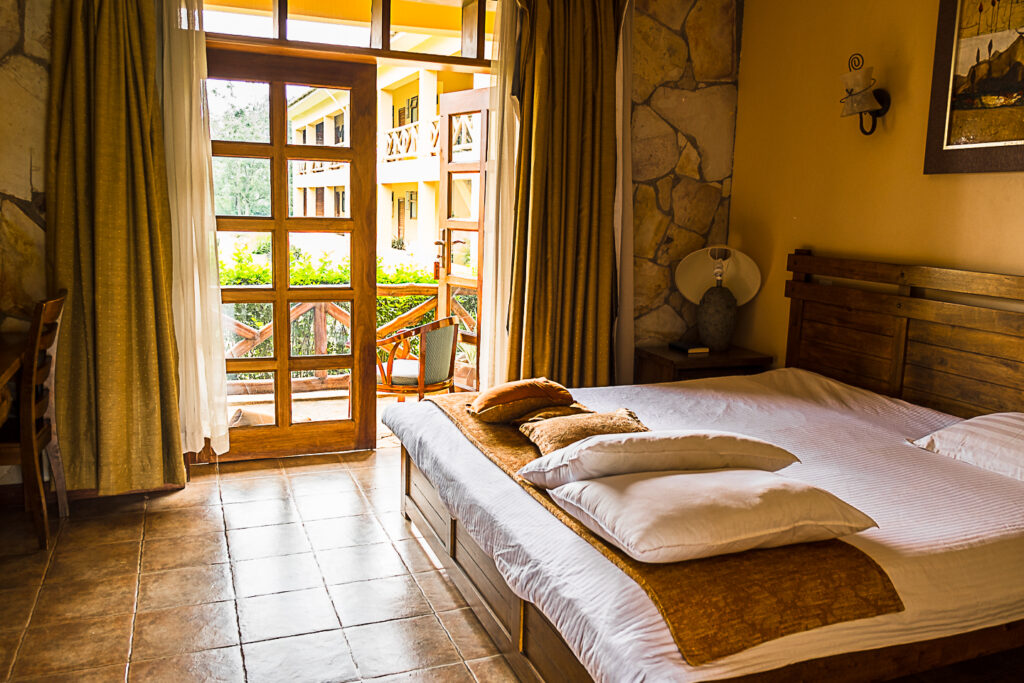
Guesthouses
Unless you book months ahead, you might not find what you are looking for when staying at a guesthouse. They can be cheap, around $10 – $25 USD/night, but most times, they are not centrally located, lack amenities such as electricity and running water and are not always kept up nicely.
However, if you are staying for a night or two and travelling solo, this can be a cheap option to consider.
The only suggestion is to do your homework months before you travel and ask about what you get with your stay.
Here are my suggestions for the best guesthouses and hotels to consider when visiting the following locales.
Entebbe
Blue Monkey Guesthouse is a family-friendly guesthouse located in central Entebbe, owned by two ex-pats from Germany. They offer accommodations from single, double, and tents to fulfill all your needs.
Rates range from $20 – $30 USD pp.
The Hive Entebbe – while the website is not great, the accommodations are. It’s only 3km away from the airport, making it a good location in a traffic-crazy country.
Rates range from $20 – $30 USD pp.
Kampala
Forest Cottages is a friendly, family-owned hotel, and you have a choice of a single room or a cottage.
The rooms also come with a buffet breakfast included and an excellent menu for dinner. It’s also centrally located, and as a guest, you get access to the pool at the golf club across the street.
Rates are approx—$ 70 USD including breakfast pp.
Jinja
I have found Gately on The Nile to be outstanding. Not only are they friendly and accommodating, but you will find everything you need at this bed & breakfast.
Rates are approx. $80 USD for a single room – $130 USD for a triple and includes breakfast.
Bwindi Impenetrable Forest
Buhoma Lodge is owned by two expats that have called Uganda home for over 30 years.
The money goes to supporting both the community and the gorillas, thus keep conservation in mind.
Unfortunately Bwindi being the top destination, rates are high in this area and finding a suitable backpacker hostel is not so easy.
Rates are high here, so expect to pay at least $140 USD/night pp.
THINGS YOU SHOULD KNOW ABOUT TREKKING THE GORILLAS IN BWINDI IMPENETRABLE FOREST
Queen Elizabeth National Park
In Queen, we usually stay at Mweya Safari Lodge because, at Triple F Photo Tours, we are guiding a photo tour, and we want our guests to stay at a lodge at least once on the trip. It is a fantastic experience reminiscent of what you see in various movies about Africa.
However, if you are on a budget, I would recommend Tembo Safari Lodge. I loved our experience here as it is locally-owned, and they did not mind us coming back late from our tour of the area.
Dinner was always ready for us after a long day in the bush. The bonus is that we would either stay in guest rooms or safari tents for the same price.
We chose the tents, and at night the elephants, while crossing from one part of the park to the other, would brush up against the tent as they lumbered past.
We did not see them as we were warned not to spook them but just knowing that they were on the other side of our tent gave us thrills for days.
Rates including breakfast and dinner are approx—$ 175 USD/night pp.
This option is on the higher side, but again, you will be hard-pressed to find anything cheaper as you are close to the park.
Here’s a travel guide when travelling through Queen Elizabeth National Park. With so much to see and do in this amazing national park, you don’t want to miss any of it.
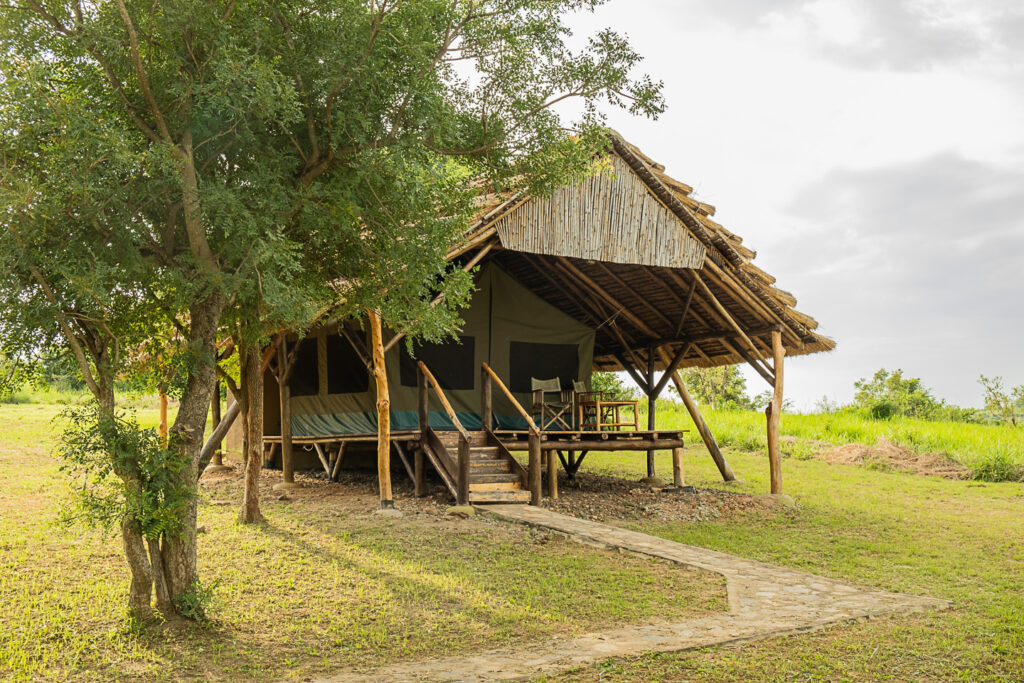
Murchison Falls National Park
Murchison Falls National Park is a top destination on most itineraries. Like Queen Elizabeth National Park, you can do the drive-through safari and a 2-hour boat tour to see many similar animals. However, here you will also see the Rothschild Giraffe and others you won’t see in Queen.
Like Queen Elizabeth NP, you will be hard-pressed to find super cheap accommodations unless you take a hostel.
However, if you want a step-up, which is more comfortable and still won’t break the bank, then I would recommend Masindi Hotel, which is a Bed & Breakfast, just outside of the park’s boundaries but close enough that you won’t miss out on the action.
Rates start at $50 USD/night and go up from there.
Fort Portal
Fort Portal is the gateway to the Rwenzori Mountains and the luscious tea estates that lie around the Albertine Rift Valley.
There are many hostels and a few good hotels in the town of Fort Portal. We have always had good luck with the Reinah Tourist Hotel, which has free wifi and a restaurant in the hotel.
The only drawback is that the hotel has no elevator, and the rooms are usually found on the 3rd or 4th floor, so if you are carrying lots of luggage, it can be hard going slogging your stuff to your room.
However, the rooms are comfortable, and it’s in the centre of the city, with a great view of the King’s palatial estate.
Rates are $70 USD/night for a double.
Whether you decide to travel to Uganda solo, with your family or as part of a group tour, using these tips will not only save you money, but you will have money left over to pay for the beautiful things you should see and do in Uganda.
Check out my ten things to see and do in Uganda for some inspiration.

Written by Amina Mohamed from Triple F Photo Tours.
Continue your travel planning, with these useful posts:
- How to stay fit while travelling
- Tips on how to travel on a budget
- What to pack for a weekend trip
- How to survive a long layover
- Tips for first time flyers
- Travel gift ideas
- How to purchase travel insurance
- Best virtual tours from the comfort of your own home
- Best travel backs to purchase in 2024
- Best travel podcasts to listen to in 2024
